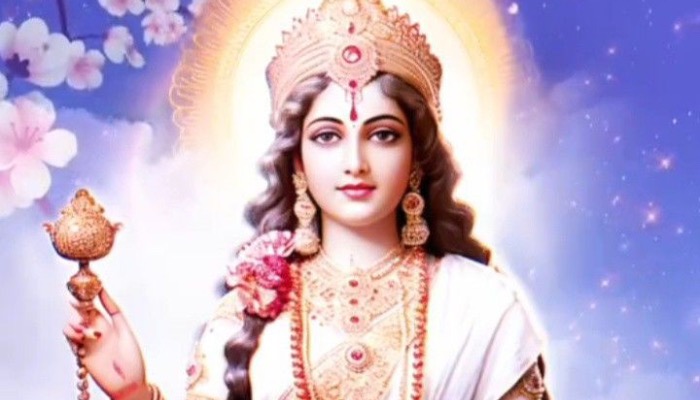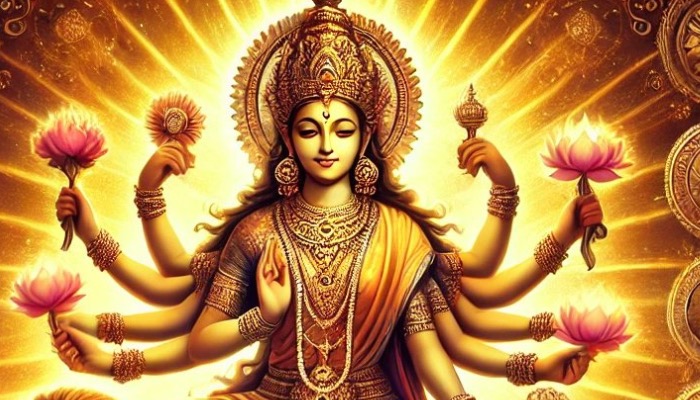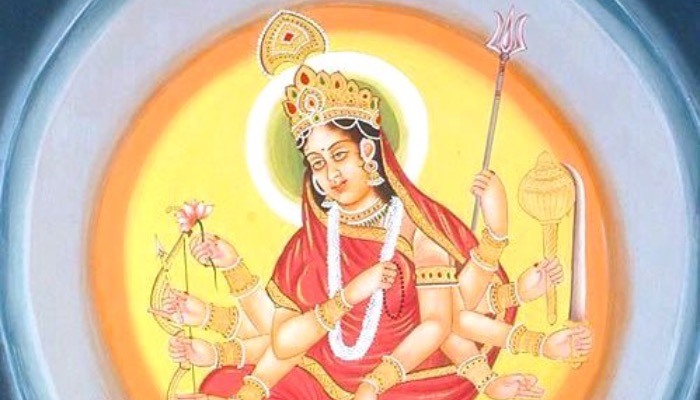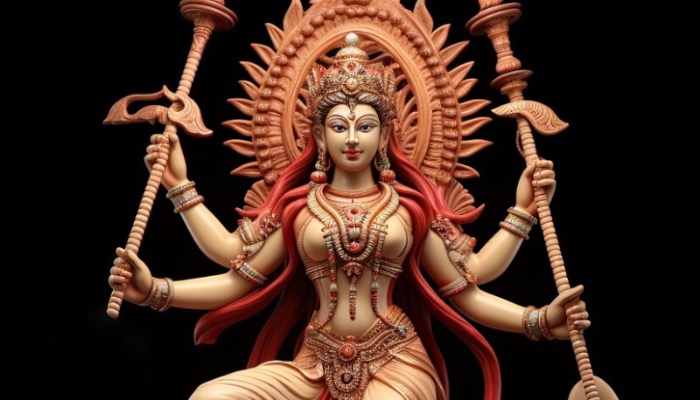On the second day of Navratri, Goddess Brahmacharini is worshipped, who embodies penance, austerity, and spiritual strength. She is the second incarnation of Goddess Durga and represents the path of self-discipline and devotion to achieve higher knowledge and spiritual enlightenment. Worshipping her on Day 2 holds great significance as it symbolizes the importance of mental and physical endurance on the spiritual journey.
Goddess Brahmacharini
In her depiction, Goddess Brahmacharini is shown wearing white clothes, symbolizing purity, and holding a rosary in her right hand and a water pot in her left. The rosary signifies meditation, and the water pot represents nourishment and sustaining life. She is often shown walking barefoot, symbolizing her detachment from worldly pleasures and attachment to spiritual growth.
Significance
Goddess Brahmacharini’s worship focuses on the power of penance and the strength to endure hardships in the pursuit of spiritual goals. Her name itself signifies “Brahma” (spiritual wisdom) and “Charini” (one who walks the path). Devotees who worship her believe that she blesses them with mental peace, strength, and the ability to overcome challenges through perseverance and devotion. It is also said that she grants the devotee the ability to control desires and achieve a higher state of consciousness, leading to spiritual enlightenment.
On Day 2 of Navratri, worshipping Goddess Brahmacharini is believed to help devotees overcome obstacles in their lives, particularly those related to their spiritual journey. By invoking her blessings, followers seek to cultivate discipline, inner strength, and wisdom, setting the stage for personal growth and a deeper connection with the divine throughout the nine days of the festival.





